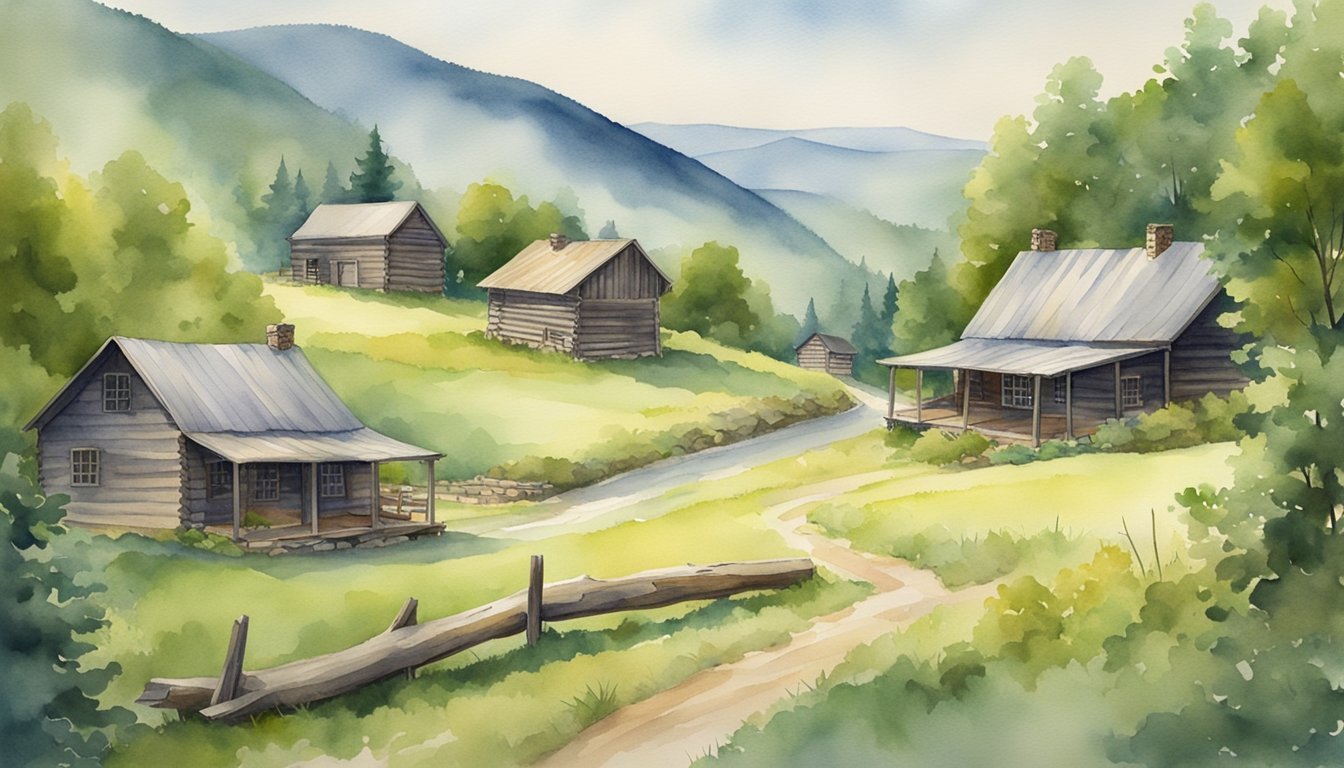Cultural and Historical Landscape

The Appalachian Mountains are not just a geographical feature but a mosaic of cultures and histories, with a rich tapestry of influences ranging from Native American tribes to European settlers, all contributing to the unique cultural expressions found here.
Origins and Peoples
Appalachia’s earliest inhabitants date back thousands of years, with groups like the Cherokee forming the backbone of Native American presence. These mountains served as a home to a variety of tribes, each leaving a profound impact on the region. The Cherokee Indians, for instance, are among the most significant, alongside others such as the Iroquois and Shawnee.
Native Influences and European Settlements
Upon European contact, a blend of cultures ensued, with British, Irish, Scottish, and Germans carving out settlements. Appalachia saw conflicts such as the Trail of Tears, which profoundly altered Native American populations. The Appalachian culture was further shaped by the migration of enslaved Africans, creating a complex societal fabric.
Cultural Expressions and Appalachia’s Art
Art within Appalachia is deeply rooted in everyday experiences and features crafts that have been passed down through generations. From quilting to woodworking, these artistic traditions mirror the environmental history of the region and its resourceful way of life.
Appalachian Music and Oral Traditions
Appalachian music reflects an amalgamation of influences, including African, British, and Irish. Ballads and gospel play heavily in the oral traditions of the region, imbuing the Appalachian music genre with its distinctive sounds. These traditions are crucial to the Appalachian way of life, telling stories of the land, love, and struggle.
Historical Shifts and Notable Figures
Key historical events and figures like Daniel Boone and the Revolutionary War have shaped the Appalachian identity. The region’s transition throughout the Industrial Revolution and into modern America has been marked by both stereotyping and resilience. Notably, the Appalachian Regional Commission has aimed to address challenges such as poverty while promoting Appalachia’s development.
Socioeconomic Developments and Impact

Appalachia has experienced significant socioeconomic developments over the years. This section explores the influence of industrial advancement, the persistence of subsistence living, the evolution of education, and the contemporary issues facing the region today.
Industrial Advancement and Economic Change
The rise and fall of industry in Appalachia has played a pivotal role in shaping its economic framework. Notably, coal mining has been a substantial driver of economic development but also a source of environmental and public health issues. As industries evolved or declined, communities experienced shifts in employment, which resulted in varying degrees of economic prosperity and hardship.
Agriculture and Subsistence Living
Historically, the people of Appalachia have relied extensively on agriculture and subsistence living, which includes hunting and gardening. These practices have deeply influenced Appalachian culture and remain important today, as some communities continue to depend on this way of life for both economic and cultural reasons.
Education and Societal Evolution
The last few decades have seen a significant shift in educational attainment in Appalachia, with more access to education leading to societal shifts. These changes have contributed to the diversification of the job market beyond traditional sectors like agriculture and coal mining.
Contemporary Issues and Future Paths
Currently, Appalachia faces a range of socioeconomic issues including poverty, unemployment, and health disparities. As the region looks towards the future, efforts such as those by the Appalachian Regional Commission are focused on addressing these challenges by promoting economic development and improving the quality of life for its residents.

